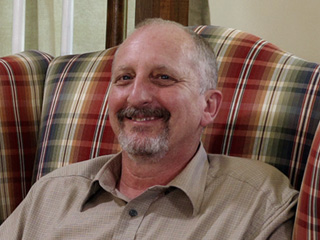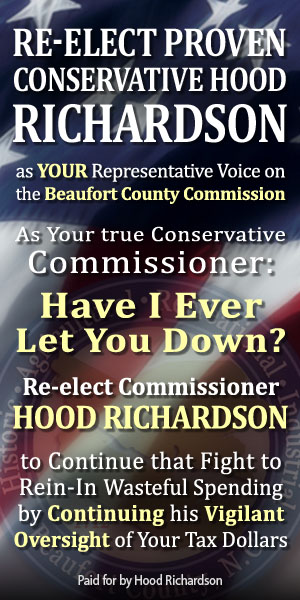Stewards of the Visual Exposition
'Slate' Columnist: Lynching Memorial Should Remind Us That Not Much Has Changed. He's Dead Wrong.
Publisher's note: This informational nugget was sent to me by Ben Shapiro, who represents the Daily Wire, and since this is one of the most topical news events, it should be published on BCN.
On Friday, Slate published a beautifully-written essay by Jamelle Bouie about the new National Memorial for Peace and Justice in Montgomery, which pays tribute to those who were lynched by white mobs between the Civil War and the civil rights movement. Here's Bouie's description:
The central structure of the memorial is a looming cloister where 800 steel columns hang from the roof. On each column is a state, a county, and the names of everyone lynched there, along with the dates of their deaths. The columns start at eye level, but as you walk through the memorial, the floor descends and the structures hang like so many victims. You, the visitor, become a kind of witness to the ritualistic murders that claimed at least 4,000 black Americans between 1877 and 1950: from the collapse of Reconstruction to the beginning of the end of Jim Crow. The scale of that killing becomes clear in an adjacent room, where replicas of those hanging steel structures are placed like coffins on the ground, arranged in alphabetical order for visitors who want to find the one that marks their town or county.
Bouie's searing description of his tour of the museum is compelling stuff, and a necessary reminder of what many Americans once were. This description of lynching photos is heartbreaking and shocking:
The pictures had a purpose: They were circulated by perpetrators as mementos, souvenirs, and propaganda, meant to warn blacks of the danger of stepping out of line, no matter how innocuous the offense. A 1935 photograph from the lynching of Rubin Stacy, a young homeless tenant farmer, shows the perpetrators and their families in comfortable, seemingly well-constructed clothing. The men are wearing slacks, the women and girls are in dresses. At their center is Stacy's lifeless body, hanging from a tree, his hands cuffed. One of the girls is smiling. A 1930 photograph from the lynchings of Thomas Shipp and Abram Smith, both 19, shows a crowd that is large, well-dressed, and visibly interested in the grim spectacle. Another photograph-from the 1916 lynching of 17-year-old Jesse Washington in Waco, Texas-shows a crowd of thousands watching as his body burns and smolders.
But he goes wrong when he begins to compare the horrors of the past with the situation of black Americans today. He writes that some people may ask why the museum must exist - "Why dwell on this painful period of American history?" The answer should be obvious: to remind us what human beings are capable of, and to remind us not to answer the call of the evil impulse within us.
But according to Bouie, that impulse isn't just something we have to fight, it's currently winning. Here's Bouie:
We live in a moment when racism-explicit and unapologetic-has returned to a prominent place in American politics, both endorsed by and propagated through the Oval Office. And in that environment, a memorial to racial terrorism-one which indicts perpetrators as much as it honors victims-is the kind of provocation that we need, a vital and powerful statement against our national tendency to willful amnesia.
What's the evidence that widespread racism is rearing its ugly head again? Bouie states:
[T]he central narrative of lynching-the lie of inherent black criminality-still shapes public life. Just weeks ago, 14-year-old Brennan Walker was shot at after knocking on a door in the predominantly white Rochester Hills, Michigan. ... In 2013, 19-year-old Renisha McBride knocked on a door in a Dearborn Heights neighborhood, seeking help after a car crash. The homeowner, Theodore Wafer, opened his door and fired his shotgun, killing her.
Except, of course, that nobody defended actions of the homeowner - and the man who shot at the teen was charged by police. The murderer of Renisha McBride was convicted of second-degree murder and manslaughter. In the era of lynching, the police would have stood by or helped out with the lynching itself.
Bouie also tries to bring back the discredited "hands up, don't shoot" slogan from the Michael Brown trial:
A statue titled "Raise Up" shows a row of men, their heads and shoulders coming out of stone, their hands raised above their heads. You don't need a guide to know what they're saying. Hands up, don't shoot. Placed after the central monuments of the memorial, it connects the racial violence of the past to the racial violence of the present, challenging the triumphant narratives that make today's America-and today's Americans-fundamentally different than those who lived before.
To pretend that the police of today are the police of Bull Connor is a lie, and an insulting one at that. But finally, Bouie gets to his main target: President Trump. He says of Trump:
Lynching echoes in other ways. ... As a candidate for president, Donald Trump promised state action against Hispanic immigrants and Muslim refugees. Not as punishment but as defense-a way to keep America free of people that, in his view, cannot assimilate. How did he describe these groups? As "rapists," criminals, and drug dealers-dangerous gang members who defile and kill innocent American women. Far from repelling voters, this language primed and activated racial fear and resentment among many white voters, supercharging its electoral potency. Trump wasn't just defining an enemy, he was speaking a language of racial threat-of purity and morality-that has its roots in the lynching era.
There's little question that Trump's language was overbroad and borderline racist (in the case of Judge Curiel, just plain racist). But the Trump talk Bouie references was of immigration specifically: he was talking about taking action against illegal immigrants and those who have not yet entered the country, not about citizens of the United States. That's a distinction worth noting at the very least. Trump certainly wasn't campaigning on the lynching of Hispanic Americans or black Americans or anyone else. Bouie concludes:
The National Memorial for Peace and Justice isn't just a memorial. It is an indictment of the United States and its ongoing commitment to racial hierarchy. It argues, explicitly, that white supremacy is fundamental to the structure of this society. And it suggests that our only option for uprooting those evils is a radical correction from our present course.
Racism still exists in America. Racism will always exist. And it's deeply worthwhile for us always to remember our past, so that we can course-correct.
But America has largely course-corrected. To ignore that fact is to destroy solidarity around racial progress itself by lumping today's Americans in with those who stood by as black men were lynched. Labeling all Trump voters racist, labeling our police departments racist, labeling white America at large racist, is disingenuous at best and highly damaging at worst to the promise of a better America.
READ MORE: RACISM
Go Back
On Friday, Slate published a beautifully-written essay by Jamelle Bouie about the new National Memorial for Peace and Justice in Montgomery, which pays tribute to those who were lynched by white mobs between the Civil War and the civil rights movement. Here's Bouie's description:
The central structure of the memorial is a looming cloister where 800 steel columns hang from the roof. On each column is a state, a county, and the names of everyone lynched there, along with the dates of their deaths. The columns start at eye level, but as you walk through the memorial, the floor descends and the structures hang like so many victims. You, the visitor, become a kind of witness to the ritualistic murders that claimed at least 4,000 black Americans between 1877 and 1950: from the collapse of Reconstruction to the beginning of the end of Jim Crow. The scale of that killing becomes clear in an adjacent room, where replicas of those hanging steel structures are placed like coffins on the ground, arranged in alphabetical order for visitors who want to find the one that marks their town or county.
Bouie's searing description of his tour of the museum is compelling stuff, and a necessary reminder of what many Americans once were. This description of lynching photos is heartbreaking and shocking:
The pictures had a purpose: They were circulated by perpetrators as mementos, souvenirs, and propaganda, meant to warn blacks of the danger of stepping out of line, no matter how innocuous the offense. A 1935 photograph from the lynching of Rubin Stacy, a young homeless tenant farmer, shows the perpetrators and their families in comfortable, seemingly well-constructed clothing. The men are wearing slacks, the women and girls are in dresses. At their center is Stacy's lifeless body, hanging from a tree, his hands cuffed. One of the girls is smiling. A 1930 photograph from the lynchings of Thomas Shipp and Abram Smith, both 19, shows a crowd that is large, well-dressed, and visibly interested in the grim spectacle. Another photograph-from the 1916 lynching of 17-year-old Jesse Washington in Waco, Texas-shows a crowd of thousands watching as his body burns and smolders.
But he goes wrong when he begins to compare the horrors of the past with the situation of black Americans today. He writes that some people may ask why the museum must exist - "Why dwell on this painful period of American history?" The answer should be obvious: to remind us what human beings are capable of, and to remind us not to answer the call of the evil impulse within us.
But according to Bouie, that impulse isn't just something we have to fight, it's currently winning. Here's Bouie:
We live in a moment when racism-explicit and unapologetic-has returned to a prominent place in American politics, both endorsed by and propagated through the Oval Office. And in that environment, a memorial to racial terrorism-one which indicts perpetrators as much as it honors victims-is the kind of provocation that we need, a vital and powerful statement against our national tendency to willful amnesia.
What's the evidence that widespread racism is rearing its ugly head again? Bouie states:
[T]he central narrative of lynching-the lie of inherent black criminality-still shapes public life. Just weeks ago, 14-year-old Brennan Walker was shot at after knocking on a door in the predominantly white Rochester Hills, Michigan. ... In 2013, 19-year-old Renisha McBride knocked on a door in a Dearborn Heights neighborhood, seeking help after a car crash. The homeowner, Theodore Wafer, opened his door and fired his shotgun, killing her.
Except, of course, that nobody defended actions of the homeowner - and the man who shot at the teen was charged by police. The murderer of Renisha McBride was convicted of second-degree murder and manslaughter. In the era of lynching, the police would have stood by or helped out with the lynching itself.
Bouie also tries to bring back the discredited "hands up, don't shoot" slogan from the Michael Brown trial:
A statue titled "Raise Up" shows a row of men, their heads and shoulders coming out of stone, their hands raised above their heads. You don't need a guide to know what they're saying. Hands up, don't shoot. Placed after the central monuments of the memorial, it connects the racial violence of the past to the racial violence of the present, challenging the triumphant narratives that make today's America-and today's Americans-fundamentally different than those who lived before.
To pretend that the police of today are the police of Bull Connor is a lie, and an insulting one at that. But finally, Bouie gets to his main target: President Trump. He says of Trump:
Lynching echoes in other ways. ... As a candidate for president, Donald Trump promised state action against Hispanic immigrants and Muslim refugees. Not as punishment but as defense-a way to keep America free of people that, in his view, cannot assimilate. How did he describe these groups? As "rapists," criminals, and drug dealers-dangerous gang members who defile and kill innocent American women. Far from repelling voters, this language primed and activated racial fear and resentment among many white voters, supercharging its electoral potency. Trump wasn't just defining an enemy, he was speaking a language of racial threat-of purity and morality-that has its roots in the lynching era.
There's little question that Trump's language was overbroad and borderline racist (in the case of Judge Curiel, just plain racist). But the Trump talk Bouie references was of immigration specifically: he was talking about taking action against illegal immigrants and those who have not yet entered the country, not about citizens of the United States. That's a distinction worth noting at the very least. Trump certainly wasn't campaigning on the lynching of Hispanic Americans or black Americans or anyone else. Bouie concludes:
The National Memorial for Peace and Justice isn't just a memorial. It is an indictment of the United States and its ongoing commitment to racial hierarchy. It argues, explicitly, that white supremacy is fundamental to the structure of this society. And it suggests that our only option for uprooting those evils is a radical correction from our present course.
Racism still exists in America. Racism will always exist. And it's deeply worthwhile for us always to remember our past, so that we can course-correct.
But America has largely course-corrected. To ignore that fact is to destroy solidarity around racial progress itself by lumping today's Americans in with those who stood by as black men were lynched. Labeling all Trump voters racist, labeling our police departments racist, labeling white America at large racist, is disingenuous at best and highly damaging at worst to the promise of a better America.
READ MORE: RACISM
| One-Stop Daily Total from Beaufort County Board of Elections as of Friday, May 5, 2018 | Guest Editorial, Editorials, Op-Ed & Politics | WATCH: Far-Left Parkland Activists Make New Absurd Claims On CNN |
Latest Op-Ed & Politics
|
Pro death roundtable
Published: Wednesday, April 24th, 2024 @ 12:39 pm
By: Countrygirl1411
|
|
populist / nationalist anti-immigration AfD most popular party among young voters, CDU second
Published: Wednesday, April 24th, 2024 @ 11:25 am
By: John Steed
|
|
political scheme behhind raid on Mar-a-Lago
Published: Wednesday, April 24th, 2024 @ 9:16 am
By: John Steed
|
|
how many of these will come to North Carolina?
Published: Tuesday, April 23rd, 2024 @ 1:32 pm
By: John Steed
|
|
Barr had previously said he would jump off a bridge before supporting Trump
Published: Tuesday, April 23rd, 2024 @ 11:37 am
By: John Steed
|
|
Babis is leader of opposition in Czech parliament
Published: Tuesday, April 23rd, 2024 @ 10:28 am
By: John Steed
|
|
illegal alien "asylum seeker" migrants are a crime wave on both sides of the Atlantic
Published: Tuesday, April 23rd, 2024 @ 9:44 am
By: John Steed
|
|
only one holdout against acquital
Published: Tuesday, April 23rd, 2024 @ 9:01 am
By: John Steed
|






















